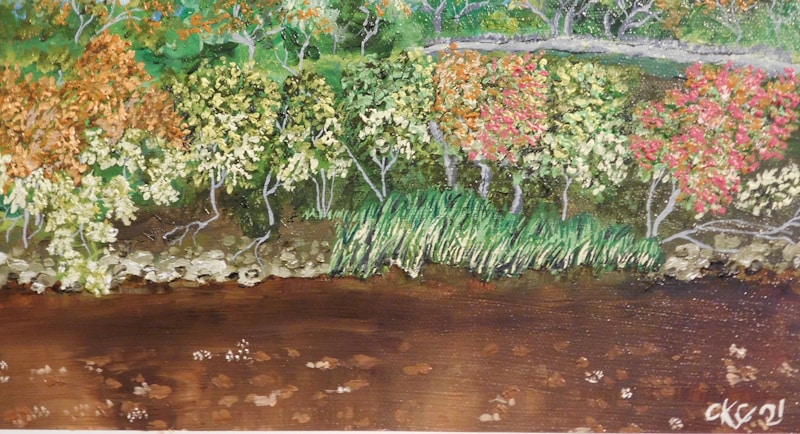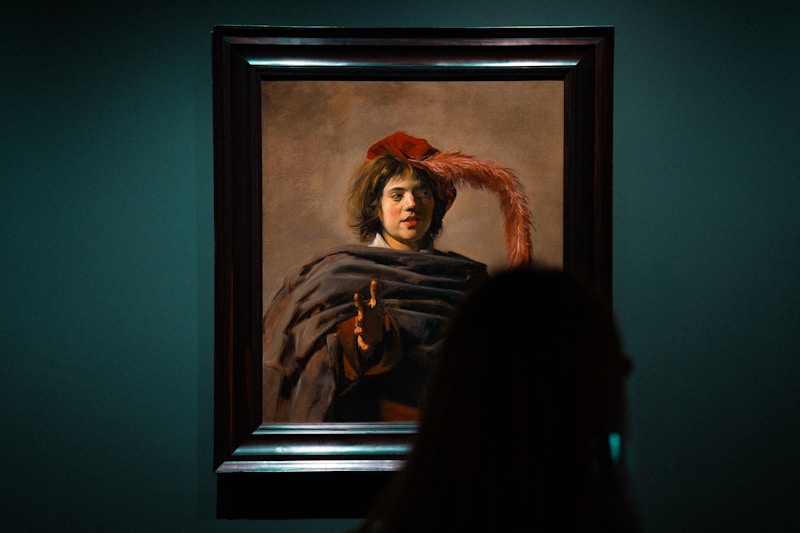9 Questions
What is the main characteristic of Baroque painting?
Emotion and drama
What is the main difference between Italian and Low Countries artists during the Renaissance?
Italian artists used more naturalistic style
Which art movement is characterized by dreamlike subjects with ambiguous references?
Symbolism
Which group of artists emphasized imaginative use of deep color over representational values in their works?
Fauvism
What was the purpose of the Dada movement in art?
To advance anti-war politics
Which American art movement was characterized by the use of banal and literal imagery and mundane materials?
Pop art
Who is considered one of the first important painters of modern abstract art?
Wassily Kandinsky
Which art movement was characterized by the return to figuration and landscape during the early 1950s?
School of Paris
What is Realism in art?
An art movement that depicted common people and events with unidealized style
Study Notes
Western Painting: A Summary
-
Western painting has a continuous tradition from antiquity to the present time, with representational and classical modes of production giving way to modern, abstract and conceptual forms in the mid-19th century.
-
Initially, Western painting served imperial, private, civic, and religious patronage, before finding audiences in the aristocracy and middle class during the Baroque era and beyond.
-
The Romantic painters like Francisco de Goya, John Constable, and J. M. W. Turner expressed the idea of "art for art's sake" in their work.
-
Western painting reached its zenith in Europe during the Renaissance, with refinement of drawing, use of perspective, and ambitious architecture, tapestry, stained glass, sculpture, and the period before and after the advent of the printing press.
-
The oldest known paintings are at the Grotte Chauvet in France, claimed by some historians to be about 32,000 years old, with cave paintings found throughout the world.
-
Minoan painting, from about 3000 to 1100 BC, is the art produced by the Bronze Age Aegean Minoan civilization, influenced by neighboring cultures of Ancient Egypt and the ancient Near East.
-
Byzantine art, with a hieratic feeling, placed great emphasis on retaining traditional iconography and style, with frescoes and mosaics.
-
The Insular art of the British Isles, Carolingian and Ottonian art, and Romanesque and Gothic art are characterized by illuminated manuscripts, frescoes, sculpture, and stained glass.
-
The Renaissance, a cultural movement from the 14th through the mid-17th century, was driven by Renaissance humanism and the study of classical sources, with Italian and Low Countries artists separately developing new ways of painting.
-
The High Renaissance in Italy saw advances in linear perspective, depiction of volume in figures, and portraying emotions on the faces of figures, while Venice developed a more naturalistic style.
-
Flemish, Dutch, and German painters of the Northern High Renaissance had a more realistic and less idealized approach, with some incorporating features of Italian art into their own.Overview of the Evolution of Western Painting
-
Renaissance painting reflects the revolution of ideas and science that occurred in this period, the Reformation, and the invention of the printing press.
-
With the development of easel painting in the Renaissance, painting gained independence from architecture.
-
The High Renaissance in Italy gave rise to a stylized art known as Mannerism after 1520.
-
Baroque painting is associated with the Baroque cultural movement, a movement often identified with Absolutism and the Counter Reformation or Catholic Revival.
-
Baroque painting is characterized by great drama, rich, deep color, and intense light and dark shadows with the purpose of the art being to evoke emotion and passion instead of the calm rationality that had been prized during the Renaissance.
-
During the 18th century, Rococo painting followed as a lighter extension of Baroque, often frivolous and erotic and using light pastel colors.
-
After Rococo there arose in the late 18th century, in architecture, and then in painting severe neo-classicism, best represented by such artists as David and his heir Ingres.
-
By the mid-19th century, painters became liberated from the demands of their patronage to only depict scenes from religion, mythology, portraiture or history.
-
Romantic painters turned landscape painting into a major genre.
-
Realism at mid-century was Gustave Courbet, whose unidealized paintings of common people offended viewers accustomed to the conventional subject matter and licked finish of academic art.
-
In the latter third of the century Impressionists such as Édouard Manet, Claude Monet, Pierre-Auguste Renoir, Camille Pissarro, Alfred Sisley, Berthe Morisot, Mary Cassatt, and Edgar Degas worked in a more direct approach than had previously been exhibited publicly.
-
Post-Impressionists such as Paul Cézanne and the slightly younger Vincent van Gogh, Paul Gauguin, and Georges-Pierre Seurat led art to the edge of modernism.Overview of Modern Art Movements
-
Symbolist painters explored dreamlike subjects with intensely personal, obscure, and ambiguous references, and influenced contemporary Art Nouveau and Les Nabis.
-
Fauvism was a loose grouping of early 20th-century artists whose works emphasized painterly qualities and imaginative use of deep color over representational values, and had only three exhibitions.
-
Die Brücke was a German expressionist group founded in Dresden in 1905, which included Ernst Ludwig Kirchner and Karl Schmidt-Rottluff, among others.
-
Der Blaue Reiter was a German movement lasting from 1911 to 1914, fundamental to Expressionism, founded by Wassily Kandinsky and Franz Marc, among others.
-
Expressionism and Symbolism are broad rubrics that involve several related movements in 20th-century painting that dominated much of the avant-garde art being made in Western, Eastern and Northern Europe.
-
Wassily Kandinsky is generally considered one of the first important painters of modern abstract art, and his earliest abstractions were generally titled as the example in the Composition VII.
-
Dada movement began in neutral Zürich, Switzerland, during World War I and peaked from 1916 to 1920, and involved visual arts, literature, theatre, and graphic design to advance its antiwar politic and rejection of the prevailing standards in art through anti-art cultural works.
-
Surrealism, the movement that dominated European painting in the 1920s and 1930s, became synonymous with the avant-garde and featured artists whose works varied from the abstract to the super-realist, and was founded by André Breton in 1924.
-
Neue Sachlichkeit ("New Objectivity") emerged in Germany as Max Beckmann, Otto Dix, George Grosz, and others politicized their paintings in response to expressionism.Art Movements of the 20th Century
-
Surrealism was a movement characterized by radical leftist politics and satirical art during the Weimar Republic.
-
Pablo Picasso painted Guernica to commemorate the "Bombing of Gernika" during the Spanish Civil War.
-
American art during the Great Depression was characterized by Social Realism and American Scene Painting.
-
Grant Wood's American Gothic was initially thought to be satirical, but later seen as a depiction of American pioneer spirit.
-
Latin American art included the Mexican muralist movement and Frida Kahlo's works, which related to Surrealism and Magic Realism.
-
Abstract expressionism, including Action painting and Color Field painting, dominated American art in the 1940s, with artists like Jackson Pollock, Willem de Kooning, and Mark Rothko.
-
Realism and figurative painting continued throughout the 20th century, with artists like Milton Avery, Edward Hopper, and Andrew Wyeth.
-
Pop art in America was inspired by the works of Jasper Johns, Larry Rivers, and Robert Rauschenberg, and included the use of banal and literal imagery and mundane materials.
-
The Bay Area Figurative Movement, related to Tachisme and Cobra, returned to figuration and landscape during the 1950s.
-
School of Paris artists, such as Jean Dubuffet and Nicolas de Staël, abandoned abstraction and returned to figuration and landscape during the early 1950s.
Test your knowledge of the evolution of Western painting and modern art movements with this comprehensive quiz! From ancient cave paintings to the Renaissance, Baroque, and Rococo periods to the emergence of Impressionism and Post-Impressionism, this quiz covers it all. Explore the rise of modern art movements such as Symbolism, Fauvism, Expressionism, Dadaism, and Surrealism, and learn about the important artists and their works. Challenge yourself and see how much you know
Make Your Own Quizzes and Flashcards
Convert your notes into interactive study material.





